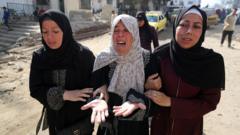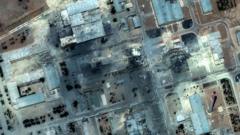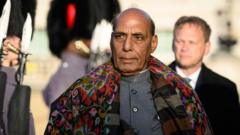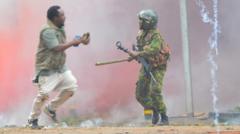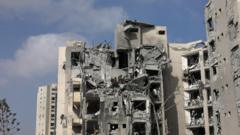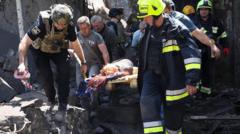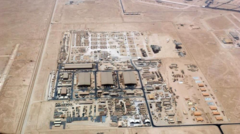Rescue teams are working diligently overnight following a magnitude 7.1 earthquake in Tibet, which has left at least 126 dead and injured 188 others. With over 3,000 buildings damaged and temperatures plunging, survivors face dire conditions.
Nighttime Rescue Efforts Intensify Following Tibetan Earthquake
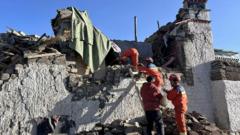
Nighttime Rescue Efforts Intensify Following Tibetan Earthquake
A powerful earthquake in Tibet has resulted in significant casualties and damage, prompting extensive rescue operations amidst freezing temperatures.
Rescue teams in Tibet are continuing their search for survivors after a devastating earthquake struck the region, resulting in at least 126 fatalities and injuring 188 individuals. The magnitude 7.1 quake hit at approximately 09:00 local time (01:00 GMT) in the northern Himalayas, producing deep tremors felt across borders in Nepal and India.
Chinese state media report that over 3,000 buildings have sustained severe damage, and with nighttime temperatures expected to drop to as low as -16C, the urgency for rescue operations has escalated. Videos disclose the chaotic aftermath, showcasing collapsed buildings and rescue workers distributing blankets to those affected.
Individuals in areas like Tingri County shared grim experiences of the earthquake, highlighting the fragile nature of local structures. "Our houses are primarily made of dirt, which did not withstand the earthquake; many collapsed," stated a local supermarket owner, Sangji Dangzhi, who is among those impacted by the disaster.
By the evening, assessments reported that more than 3,609 buildings had either collapsed or been severely damaged, leaving countless residents in immediate need of shelter. Reports indicated that, in the aftermath, miscommunication about potential aftershocks muddled the situation as residents feared further seismic activity.
Although the Chinese media assigned a slightly lower magnitude of 6.8 to the earthquake, geologists confirmed a depth of 10 kilometers. According to Jiang Haikun of the China Earthquake Networks Center, there is potential for additional tremors but the risk of a greater earthquake remains limited at this time.
In light of this disaster, the Chinese air force dispatched rescue efforts and drones to assist with operations. President Xi Jinping urged for comprehensive search and rescue initiatives, hoping to minimize casualties and ensure the rapid resettlement of displaced residents.
Notably, the Dalai Lama expressed his sorrow over the events, offering prayers for those lost in the quake and wishing for a swift recovery for the injured. Tibet's Shigatse region, where the earthquake's impact has been particularly severe, is historically significant in Tibetan Buddhism.
Meanwhile, neighboring Nepal reported no significant casualties or damage despite experiencing frightful tremors. Citizens recalled the devastating 2015 earthquake that claimed nearly 9,000 lives, emphasizing the psychological toll seismic events impose upon the region’s population.
As rescue operations persist into the night, authorities remain vigilant against potential aftershocks while striving to provide immediate relief and support to those affected by this natural disaster.




